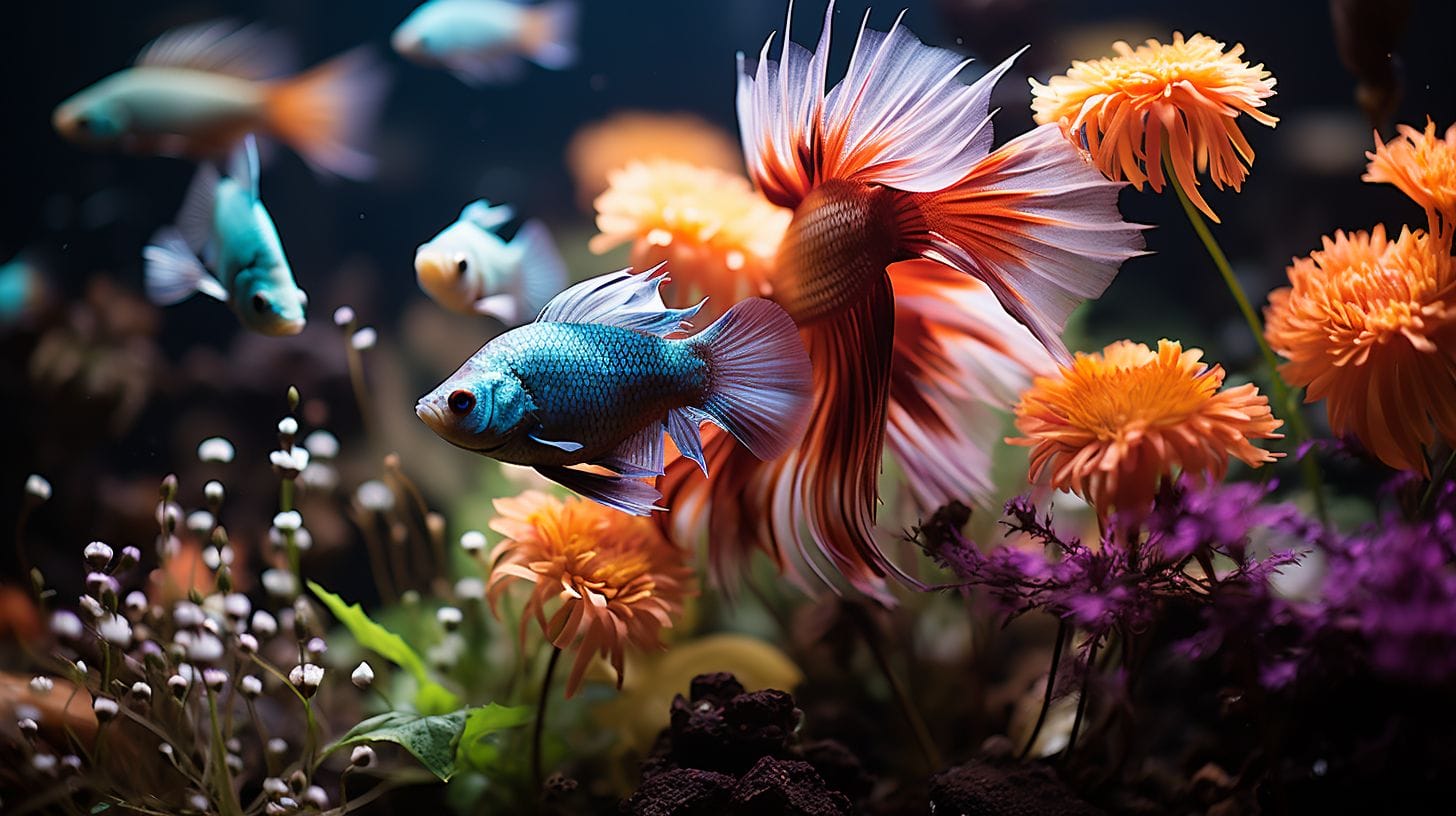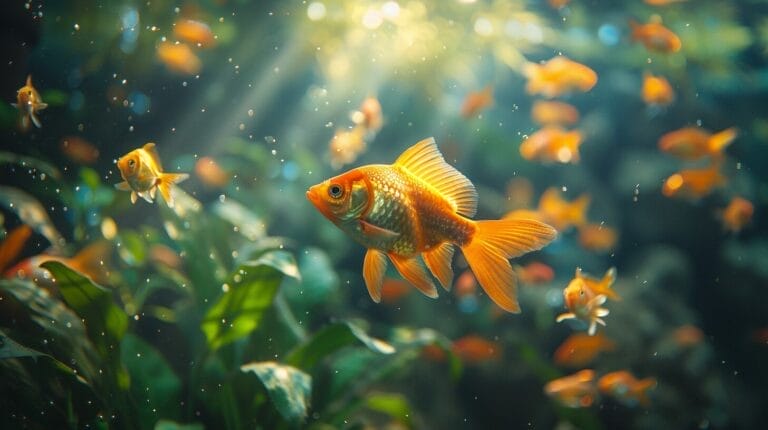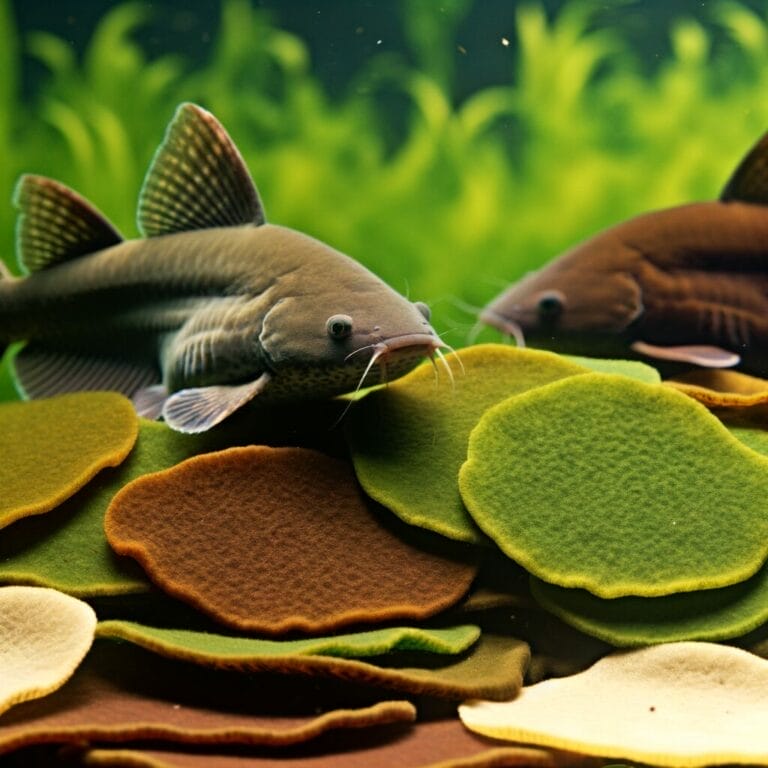Floating Plants for Fish Tanks: Best Aquarium Beautifiers
Did you know that adding plants to your aquarium via floating plants aren’t merely aesthetic additions to your fish tank? Freshwater aquarium plants like Amazon Frogbit play a significant role in maintaining a healthy and balanced aquatic environment.
Acting as natural filtration systems, water ferns and other similar plants absorb harmful toxins while oxygenating the still water, making them beautiful and functional additions for smaller aquariums. In our Floating Plants for Fish Tanks guide, we will delve into these amazing plants, and more!
Key Takeaways
- Floating plants in fish tanks provide numerous benefits, including enhancing water quality, providing additional oxygen, serving as hiding spots for fish, helping regulate temperature, and reducing algae growth.
- Some popular types of floating plants include Amazon Frogbit, Water Lettuce, Red Root Floater, Salvinia, and Dwarf Water Lettuce.
- Care and maintenance of floating plants involve providing adequate lighting, removing excess or dying plant material, avoiding overcrowding, monitoring nutrient levels, and trimming plants as needed.
- Floating plants are compatible with peaceful community fish tanks, but should be avoided in tanks with aggressive or herbivorous fish. Aquatic plants may coexist with small to medium-sized fish such as betta fish, and may also serve as a food source for herbivorous aquarium fish. Regular monitoring for signs of plant damage or stress in fish is important.
Understanding the Role of Floating Plants in Your Fish Tank
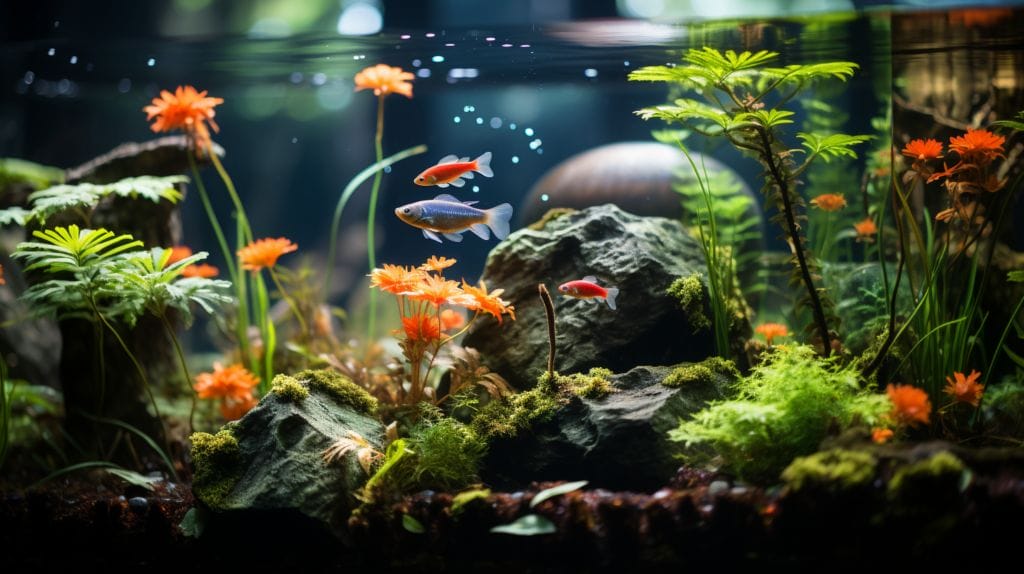
Floating plants offer numerous benefits for your aquarium. They act as natural filters, absorbing toxins and carbon dioxide while releasing oxygen, maintaining clean, healthy water vital for your fish’s survival. They mimic the environment many fish would experience in the wild, contributing to the well-being of your aquatic friends, like when floating plants grow.
Moreover, by providing shade on the aquarium’s surface, they reduce the amount of light penetrating the tank, creating a calming environment and preventing harmful algae growth.
The roots of these plants, where floating plants grow, also offer hiding places for smaller fish and breeding ground for beneficial microorganisms. Aesthetically, they add a touch of natural beauty, creating a dynamic surface and bringing a sense of depth to your tank.
Benefits of Incorporating Floating Aquarium Plants into Your Setup
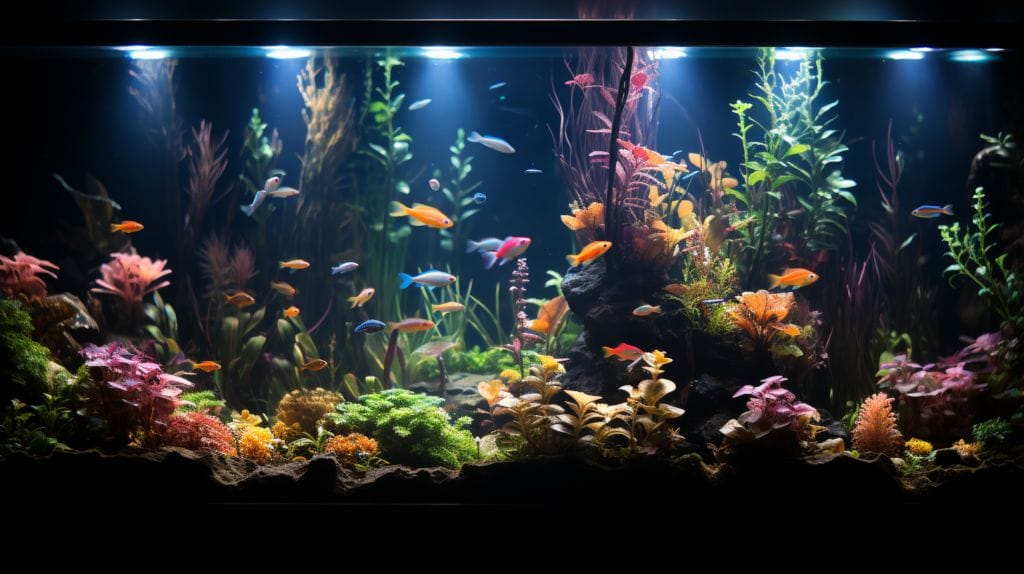
Floating aquarium plants significantly enhance water quality and provide shade and shelter for fish. They absorb harmful nitrates and phosphates, improving water quality and creating a healthier environment for fish.
The rapid growth of popular aquatic plants in smaller aquariums increases the rate at which they purify the water surface and reduces algae growth, contributing to a balanced ecosystem. These popular aquatic plants also create a natural habitat, easing stress and fostering healthier behavior.
| Benefits | Plants in the Tank | For Your Fish |
|---|---|---|
| Water Quality | Absorb harmful nitrates & phosphates | Healthier environment |
| Shade & Shelter | Reduce algae growth | Reduced stress |
| Natural Habitat | Aesthetically pleasing | Promotes healthier behavior |
Top Floating Aquarium Plants for Your Fish Tank
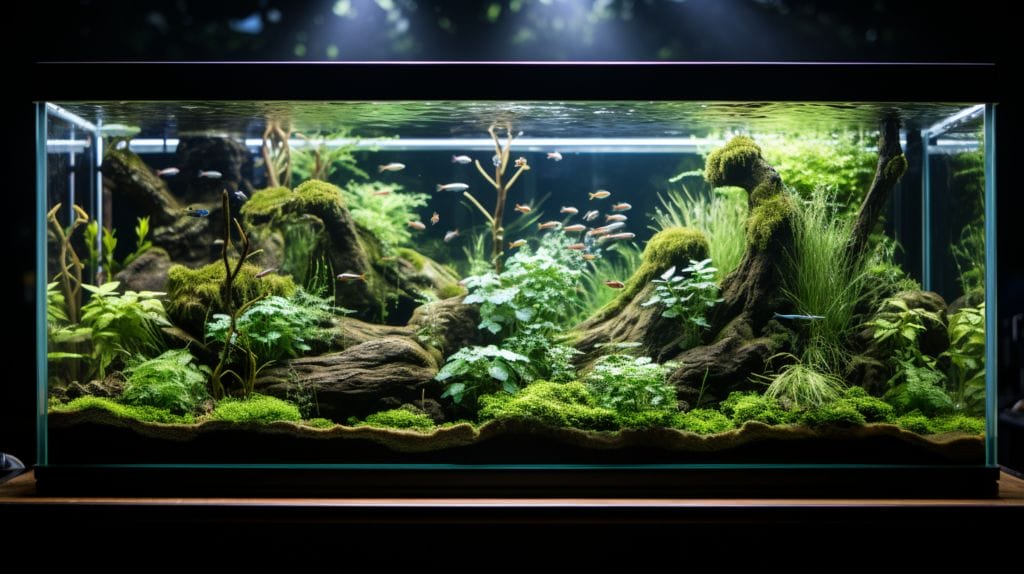
Let’s take a closer look at some top picks: Amazon Frogbit, Water Sprites, Dwarf Water Lettuce, and Water Wisteria.
- Amazon Frogbit, also known as water hyacinth in some circles, with its lily-pad-like leaves, provides a beautiful top layer and a shaded sanctuary for your aquarium fish.
- Water Sprites, perfect for beginners, grow quickly and are known for their filtering abilities.
- Dwarf Water Lettuce can thrive in various tank conditions, and its dense roots offer a fantastic hiding place for fish and shrimps.
- Water Wisteria, also known as a delicate aquarium plant with its feathery leaves, adds elegance to any tank while also providing a nutritious snack for your fish.
Growing and Caring for Your Floating Aquarium Plants
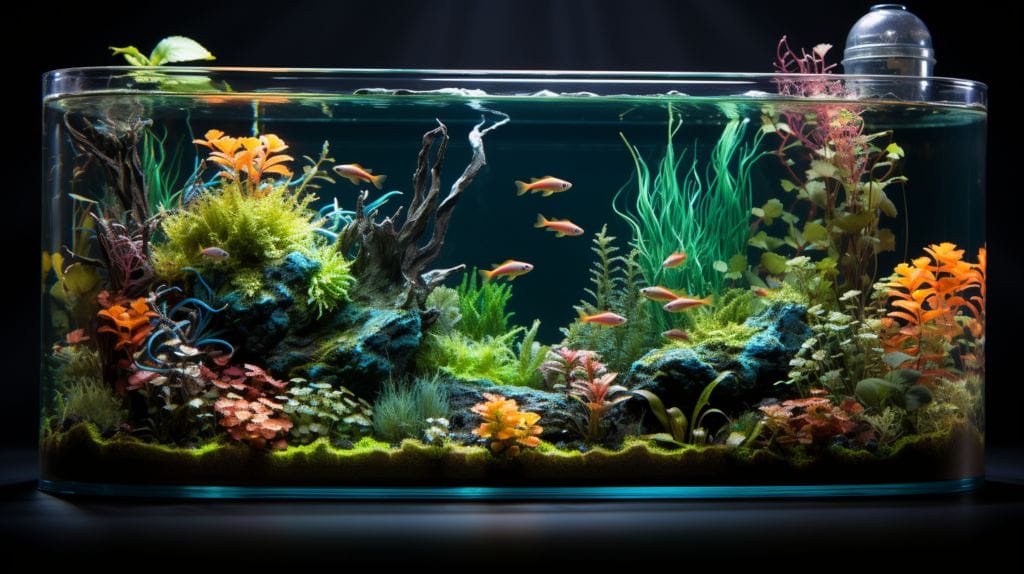
Growing floating plants can be rewarding but also challenging. These plants thrive in light and nutrient-rich water. Over-fertilization, however, can cause algae bloom. Care involves regular pruning to prevent them from blocking light for the plants below, monitoring nutrient levels to avoid blooms, and adjusting the water temperatures while replacing old plants with younger, healthier specimens.
Caring for your floating aquarium plants involves:
- Regular pruning: Some plants grow quickly and can cover the entire surface of your tank, blocking light for the plants below. Regular trimming keeps them in check.
- Nutrient monitoring: Keep an eye on nutrient levels in your tank. Excess nutrients can lead to problems like algae blooms.
- Replacing old plants: As plants age, they lose vigor. The best way to avoid this is to replace them with younger, healthier specimens.
Maximizing the Benefits of Your Aquarium Floating Plants
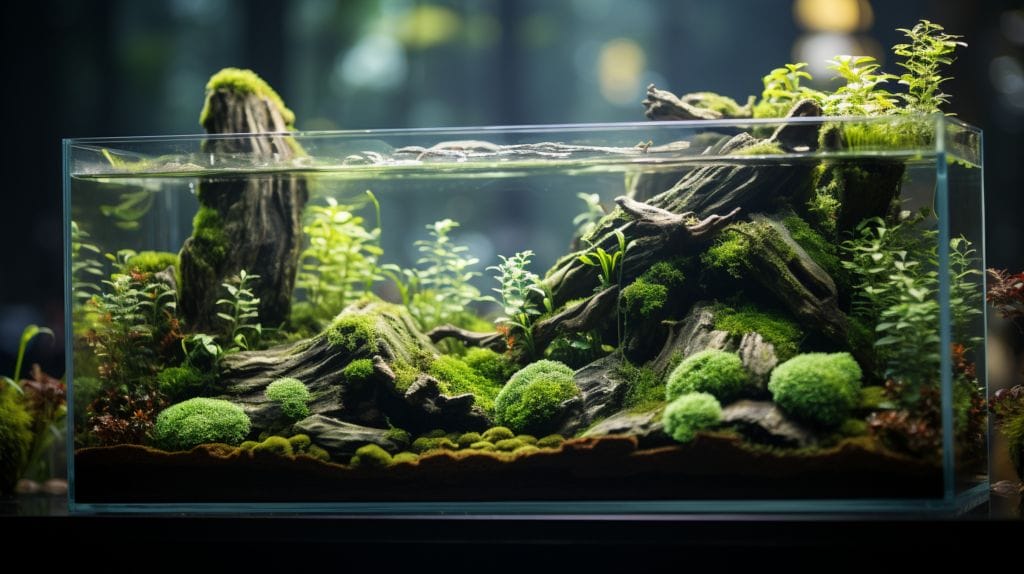
Ensuring proper positioning of floating plants in your aquarium guarantees that each plant secures sufficient light for photosynthesis and averts overcrowding. Balancing the number of floating plants with other plant species prevents light blockage and maintains a healthy ecosystem.
Furthermore, floating plants offer a natural habitat and feeding ground for fish and invertebrates, enhancing the overall biodiversity of your tanks.
To help visualize these points, here’s a handy table:
| Maximizing Factor | Benefit |
|---|---|
| Strategic Placement | Ensures adequate light for photosynthesis, prevents overcrowding |
| Balancing Plant Species | Aquatic plants help maintain a healthy ecosystem in your planted aquarium, they also prevent light blockage. |
| Choice of Floating Plants | Floating plants in your aquarium enhance biodiversity and serve as a natural habitat. |
Conclusion
So, we’ve explored the beauty and benefits of floating plants in our fish tanks. They’re not just aesthetically pleasing, but also provide a healthier environment for our aquatic friends. By choosing the right plants and taking proper care, we can maximize these benefits.
Let’s transform our fish tanks into thriving ecosystems, enhancing our pet’s lives and our home décor. After all, a beautiful aquarium is more than a hobby, it’s a passion.
Frequently Asked Questions
What are the benefits of having floating plants in my aquarium?
Floating plants like Water Wisteria provide several benefits such as offering shade and shelter for betta fish, adsorbing excess nutrients, improving water quality, and adding a natural aesthetic to your planted aquarium.
What are the best floating aquarium plants for beginners?
Some popular floating plants for beginners include amazon frogbit, dwarf water lettuce, and water spangles as they are relatively low-maintenance and can thrive in a wide range of water conditions.
How do I add floating plants to my aquarium?
To add floating plants, simply place them gently on the surface of the water in your aquarium. Avoid overcrowding and regularly trim the freshwater aquarium plants to maintain a balanced and healthy environment for your aquarium fish.
Do floating plants require special water conditions to thrive?
Floating plants are generally adaptable and can thrive in a wide range of water conditions. However, they may require specific attention to factors such as lighting, temperature, and nutrient levels to ensure optimal growth.
Can floating plants coexist with other live plants in the aquarium?
Yes, floating plants can coexist with submerged plants in a variety of water temperatures in the aquarium. They occupy the surface area and do not compete directly with other live plants for nutrients in the water column.

